Protect your land
Any pesticide lost on your farm is a risk to your land. Check your pesticide label for advice on actions you should take to protect your land, water, other people, livestock, wild life and valued plant life as well as yourself. The questions below will help you to asses the risk to your land. We also show you the two types of loss (diffuse loss and point source pollution) and common mistakes made when using pesticides, and how to avoid them.
Assess the risks to your land
add
remove
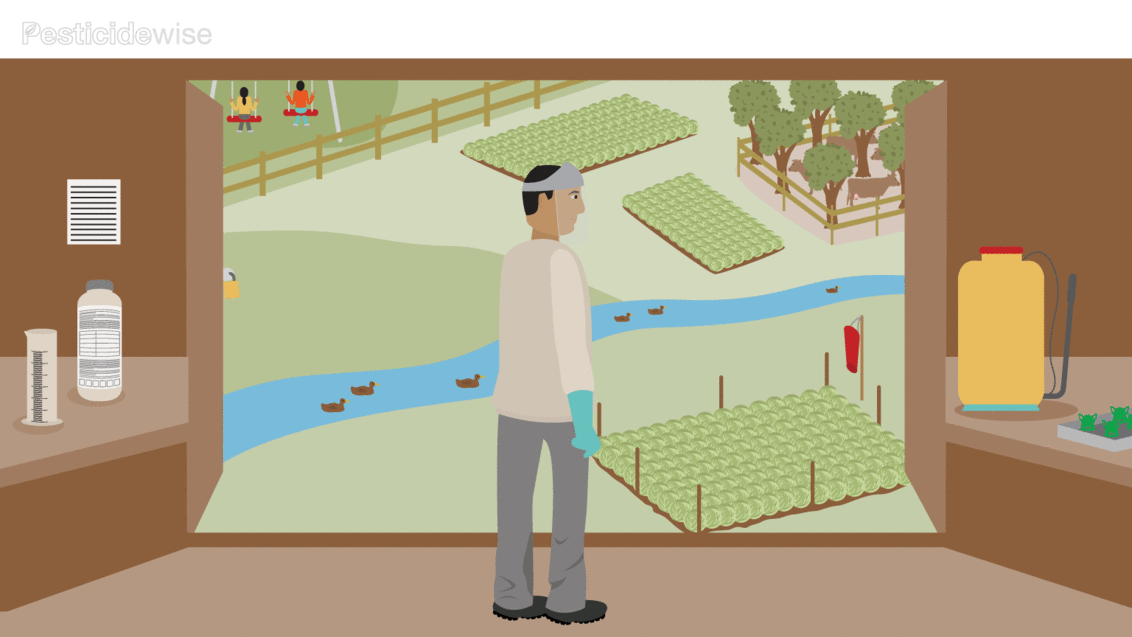
Take care when using pesticides on your land. Refer to your pesticide label and consider these key questions:
- Is this pesticide registered for my planned use?
- Have I got the right spraying machine for this use in my fields?
- Do I have the skill and the tools that I need for this spraying task?
- Do I plan to spray near water (rivers, streams, ditches, ponds, wells, puddles, drains or channels)?
- Where does the water from my land go?
- Do I plan to spray near other sensitive areas (e.g.: near buildings in use or wildlife or valued plants)?
- Do I need to take action to protect sensitive areas?
- Is it enough to create a no-spray or buffer zone to protect water from spray drift?
- Do I need to use low drift nozzles?
Misuse of pesticides is rare and includes using pesticides that are not approved or fake. Poor practice, field losses and field mistakes are more common and cause damage. Report the event If you cause or see any pesticide losses. Keep your list of emergency contacts up-to-date.
Take care! Use best practices to protect your land
Avoid pesticides losses and mistakes
add
remove
Diffuse losses
Check your pesticide label for advice on how to avoid diffuse losses (e.g.: avoid spraying dry, cracked soil before heavy rain or before irrigating).
Point source pollution
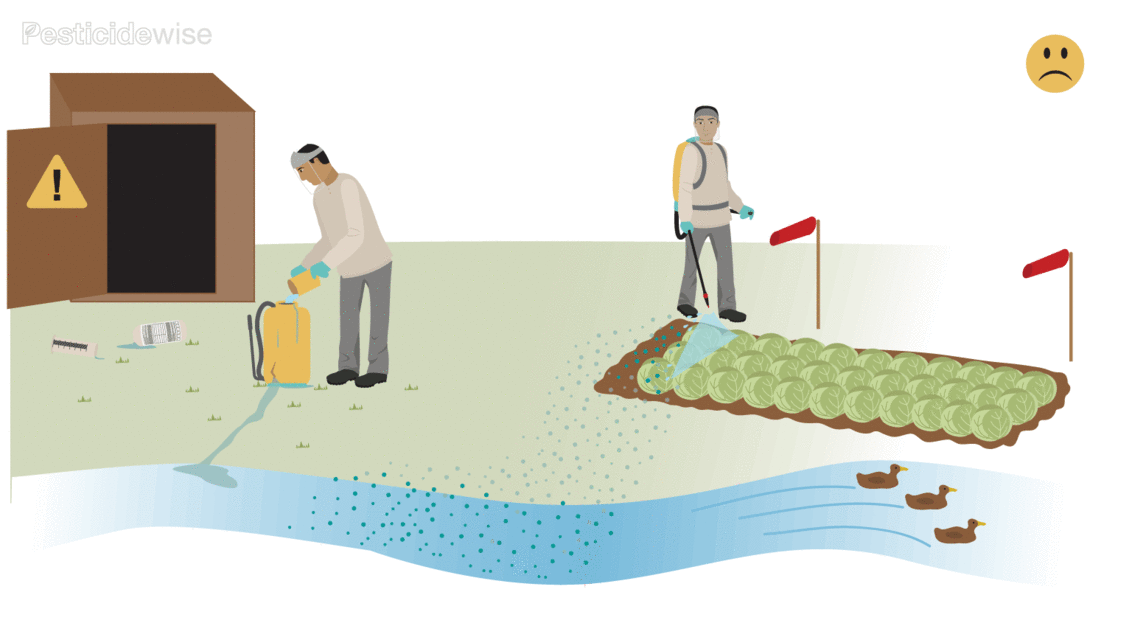
Point source pollution occurs where pesticide finds its way into ground and surface water. The most common cause is when pesticide is:
- spilt from pesticide packs
- spilt whilst mixing pesticides
- spilt from disposal of left over pesticides
- in sprayer wash water which drain onto soil or into drains
- sprayed from faulty sprayers which emit too much or leak pesticide
- sprayed using poor field practice such as spraying ditches or spraying when turning (TOPPS).
Avoid pesticide losses by checking and calibrating your knapsack sprayer and by taking care when disposing of left over pesticides and pesticide packs; cleaning your sprayer; cleaning your PPE; and mixing your pesticide. Keep a spill kit nearby. Use best spraying practices and spray only the target surfaces.
Spraying the wrong field
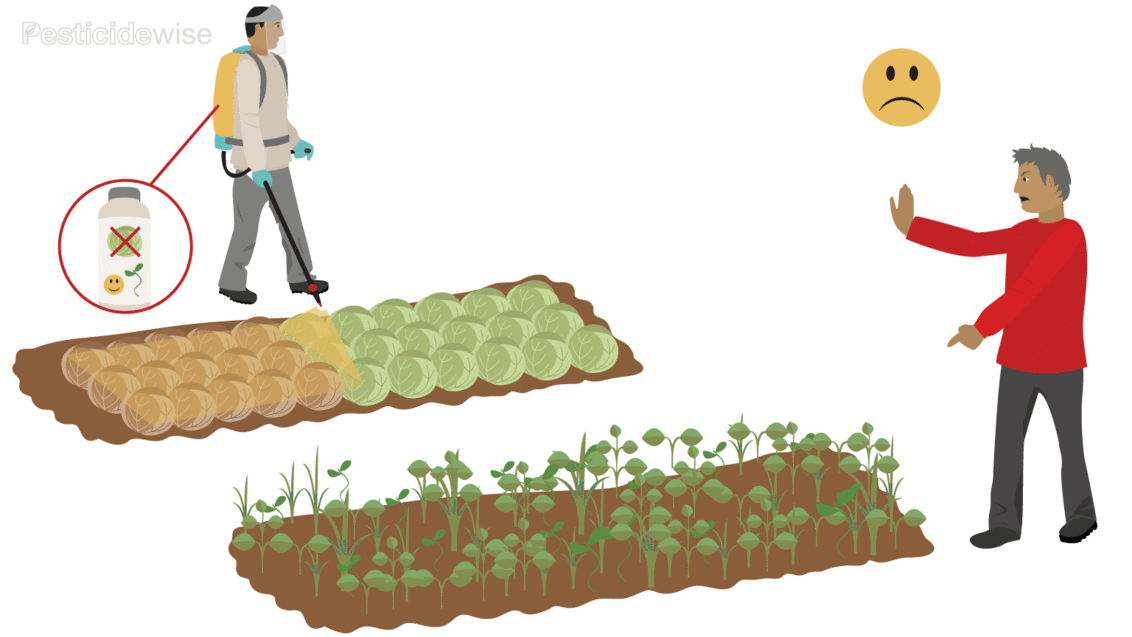
Mistakes can happen if you spray the wrong field. Check and check again which site is to be treated.
- Look twice to make sure you have the right product: pesticide names can be confusing
- Read the label in the light: pesticide stores can be too dark to read some labels
- Store insecticides and fungicides away from herbicides. This helps to reduce the risk of the costly error of spraying a herbicide when you planned to spray an insecticide or a fungicide.
Poor sprayer cleaning
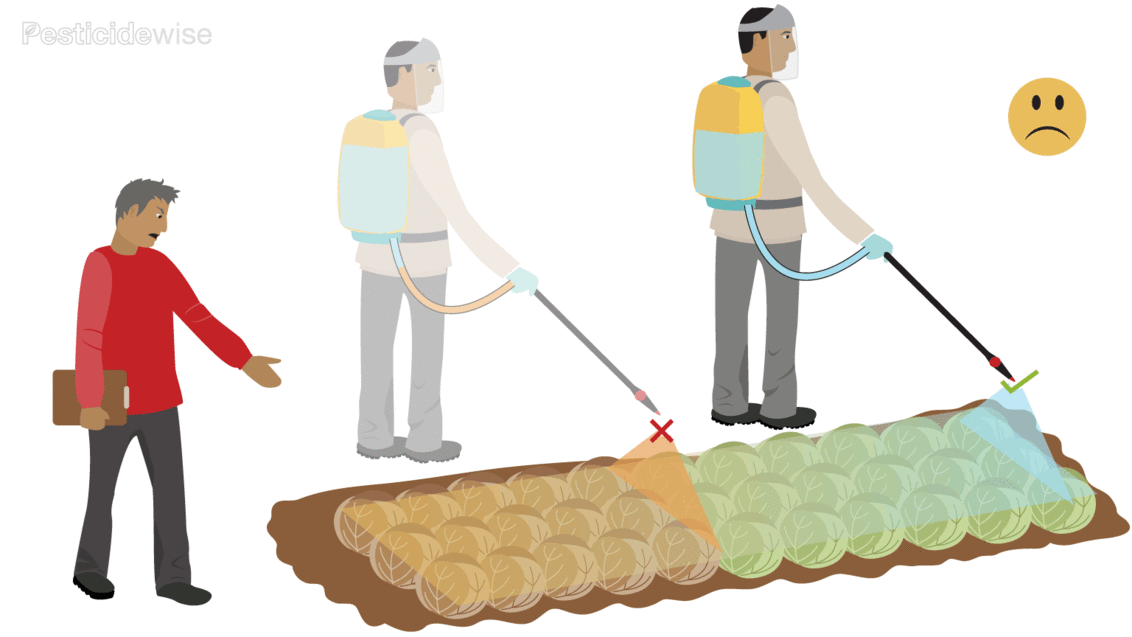
Mistakes can happen when the sprayer is not cleaned out between spraying tasks. The worst mistakes occur when insecticides or fungicides are added to left-over herbicide, causing damage to the crop. Clean your sprayer after each spraying task.
If you plan to spray larger areas, consider using one knapsack sprayer for spraying herbicides only and using another knapsack sprayer for spraying insecticides/fungicides.
Spray drift
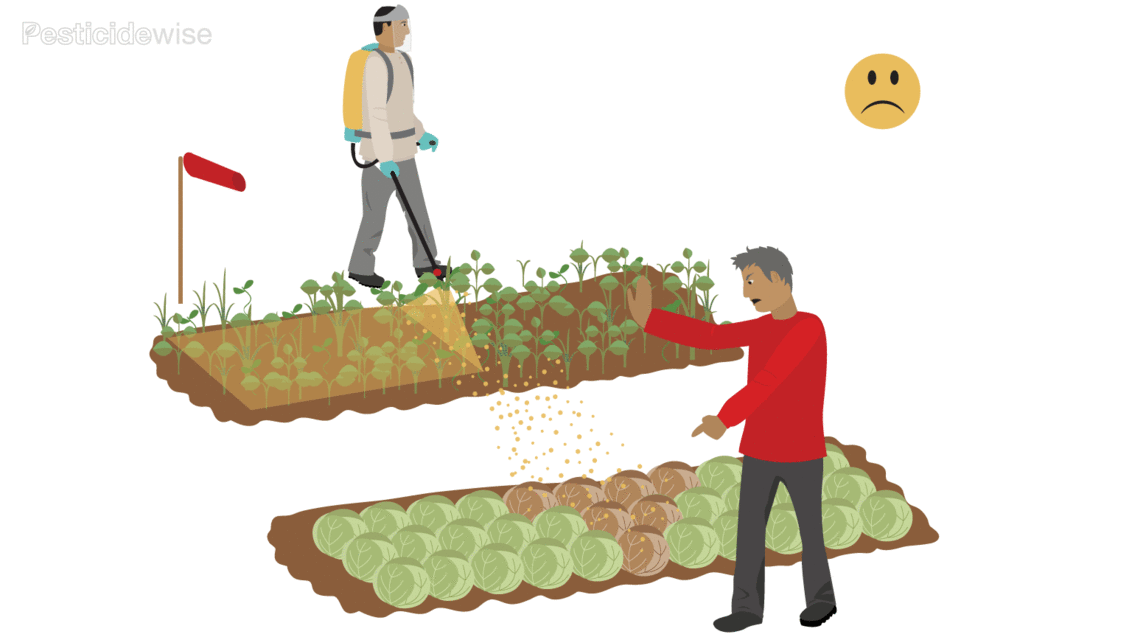
Spray drift can damage crops nearby. Review our advice on reducing spray drift, use low drift nozzles, no spray or buffer zones, and if needed, delay spraying until the weather is right.
Off-label use of products
Mistakes can be caused by using the pesticide on either the wrong crop or to control the wrong pest. Or both. Check your pesticide label to make sure that your pesticide can be used on the crop and pest that you plan to spray.
Avoid leaf runoff
add
remove
You will cause leaf run-off if you apply a spray mix volume that is too high for your target surface to retain. This can happen if you:
- use too large a nozzle
- hold the nozzle too close to the plant
- spray with the knapsack at too high a pressure
- move the nozzle too slowly across the plant
- spray overlapping swaths where swaths are supposed to join edge to edge.
Run-off is more likely where leaves are angled steeply, have a slippery (smooth and waxy) surface and/or are wet from rain.
Sometimes the pesticide product may cause run-off if it is poorly made or mixed so that the drops do not easily stick to the leaves.
Avoiding leaf run-off
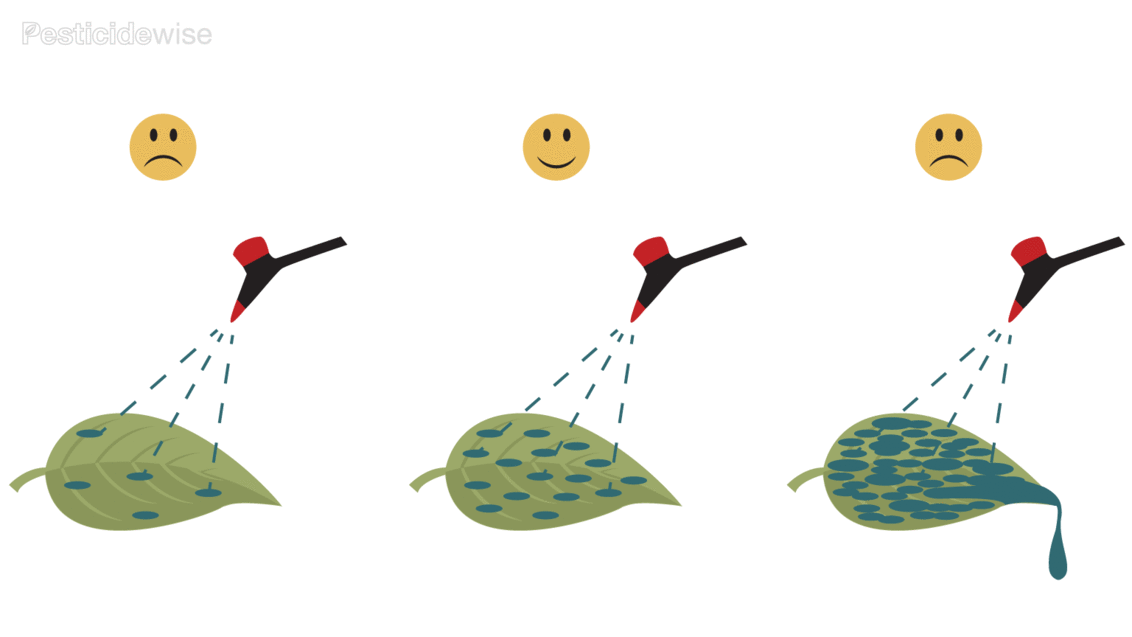
Calibrate you knapsack sprayer each time you spray and practice spraying with water until you get the right cover of spray drops on the leaves. How you calibrate will depend on how your local expert and your pesticide label advise pesticide dose and water rates. Some use:
- pesticide dose and spray mix/water volume rate e.g. 4 L/ha in 400 litres of water; others use
- spray mix concentration e.g. 200 ml of pesticide product in 100 L of water. Some of these labels will also advise the volume of spray liquid to apply to an area/plant/group of plants. Others will simply state "spray to run off".
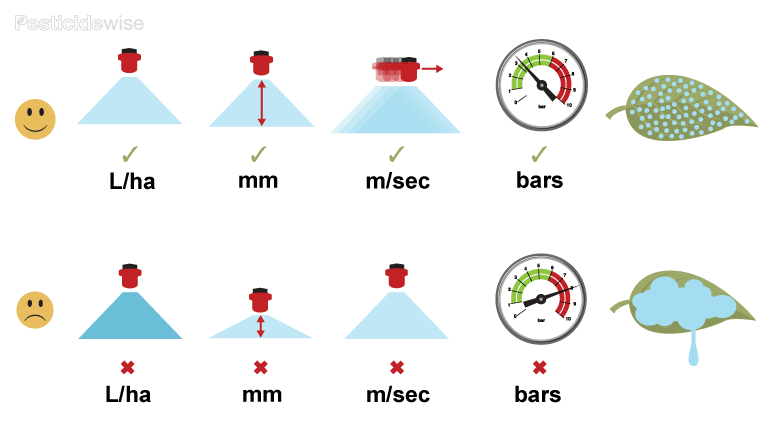
When you calibrate your knapsack sprayer, you will vary your nozzle size, your spraying distance (the distance of the nozzle from the leaf), the spraying pressure and your spraying speed until you can spray so that every leaf has a good spread of drops but no run-off.
If you have some wetter (surfactant) then add it to the water at 0.1% (e.g. 10 ml in 10 litres of water) when you practice. This will make the water act more like the pesticide spray liquid and help the drops stay on the leaves. Make sure the leaves dry again before you spray with your pesticide.
Water sensitive paper
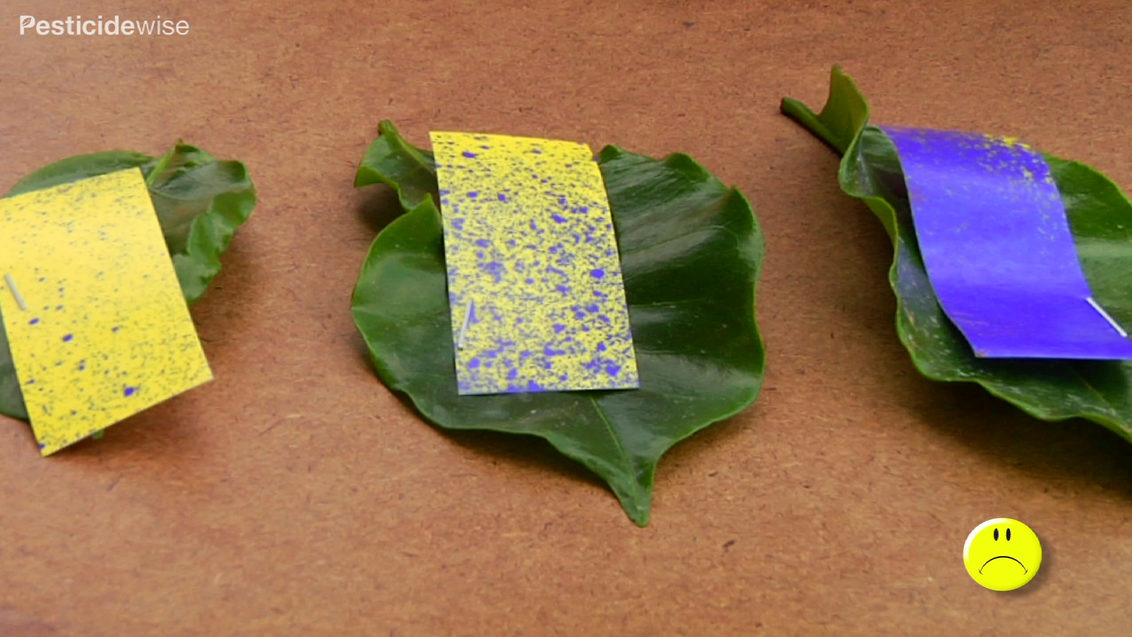
Try using water sensitive paper to help you become more accurate.
Reduce spray drift
add
remove
What is spray drift?
Reduce spray drift
- Do not spray if the wind speed is too high. Often it is less windy in the early morning and in the evening. Check the weather forecast for the best time to spray.
- Plan to grow low input crops near sensitive areas.
- Maintain a buffer zone between your crops and sensitive areas.
Use low drift nozzles
add
remove
Use low drift nozzles to reduce the risk to you and your surrounds: check your pesticide label for advice.

A low drift nozzle is:
- any type or make of nozzle
- proven to reduce spray drift when used at a given pressure when compared to a standard nozzle.
There are two common designs of drift reducing nozzles:
- 'Low drift' nozzles, which use a restrictor to reduce the pressure at the nozzle opening. The lower pressure causes larger drops to form, which are less likely to drift.
- Air induction nozzles, which pull air into the nozzles to make larger drops of air and spray liquid
Low drift and air induction nozzles
Nozzle spray patterns with and without wind
Notice how the spray pattern of the standard nozzle (top right) is blown out of shape, whereas there is little change in the spray pattern of the air induction nozzle (bottom right).
Learn more about air induction nozzles on Stewardship Community.
Create buffer zones
add
remove
Local rules may demand that with some products, you have a Buffer Zone between where you spray and surface water such as a river. Buffer zones reduce the amount of product that may contaminate surface water from drifting drops. If Buffer Zones are not used as directed by the label, the future use of that product may be withdrawn from the market.